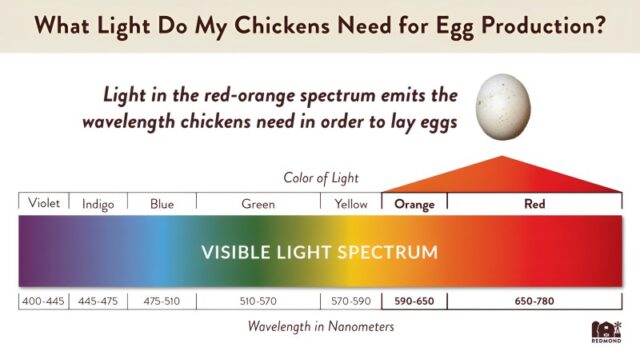1Division of LPM, F.V.Sc & AH, SKUAST- Jammu
2Division of LPM, GADVASU, Ludhiana, Punjab
Introduction
Poultry sector is the fastest growing agri cultural subsector providing food security and nutrition. Poultry meat and egg provide energy, protein, and essential micronutrients to the human population. Poultry egg and meat are among the most common animal food source consumed by mankind at global level. Light is an essential factor for growth of birds as well as for development and functioning of reproductive system. Light is an important exogenous factor in control of many physiological and behavioural processes. Light allows the bird to establish rhythmicity and synchronize many essential functions, including body temperature and various metabolic steps that facilitate feeding and digestion. Lighting is an important component of successful commercial poultry production. With laying birds (including breeders) light is significant in the development and functioning of the bird’s reproductive system, influencing the age when she initiates laying number of eggs laid in a given period. The pattern of changing day length experienced by birds influences them in two ways:
1. In spring when natural day light increases growing pullets get early sexual maturity and stimulates egg production during the laying period.
2. In autumn decreasing day length cause late sexual maturity of growing pullets and decrease egg production.
The term Photoperiod means the duration of light to which an animal is exposed to within a 24-hours period. In another words it is the relative duration of light and dark experienced by an animal within a 24 period. A long day photoperiod (LDPP) means exposure of light for 14-18 hour and 6-8 hour of darkness in 24 hour while a short-day photoperiod (SDPP) is characterized by exposure of light for period of 8 hour and 16 hour of darkness in 24 h. Supplementary artificial light is a commercial necessity in order to maximize egg production.
Aims of lighting programs for laying hens:
- Stimulate feed intake and growth
- Influence the timing of sexual maturity
- Maximize egg numbers
- Optimize egg weight
- Influence time of egg-laying
- Control undesirable behaviour
How light effect growth and sexual maturity?
The primary organ for receiving light is eye. Eye receives light and through optic nerve it give stimulation to hypothalamus which in response release GnRH (Gonadotropic Releasing Hormone). The elevated level of GnRH induce anterior pituitary to release GH (Growth Hormone), LH (Luteinising hormone) and FSH (Follicle stimulating hormone).The quantity of these hormones produced by the pituitary gland will influence the level of activity of the target organ or response which means more the light, more secretion of hormones and greater will be the response and earlier the sexual maturity. The growth hormone stimulate growth, cell reproduction and cell generation. Both LH and FSH act at the level of the gonads to initiate sexual maturation, by stimulating gametogenesis and the synthesis of sex steroid hormones. The FSH is responsible for growth and development of follicles while LH is responsible for the ovulation. Light not only effects the feed intake and reproductive ability but also regulates some behavioural functions also.
Lighting programme for poultry
Achieving satisfactory production from birds depends upon adequacy of light proofing. In dark periods intensity of light should not exceed 0.4 lux (0.04 fc).To achieve recommended 5% production at 25 week age photo stimulation should not occur before 21 days. The target is to achieve 14 hr light and 10 hr dark period. From age of 21 hr 5 minute per day light should be increased until 14 hr light is achieved. The light should be constantly increased nut in a sudden manner. The prevention should be taken that all birds of flock have similar body weights.
Table 1. Lighting program for layers kept in controlled environment

Light Source
Typically, incandescent bulbs were common in poultry houses. However, there has recently been a trend towards the use of fluorescent bulbs or high pressure sodium discharge lights because of their longer livability and lower costs. The type of light source used generally does not affect production parameters such as growth rates, feed efficiency or mortality in birds. The light source does not affect egg production, hatchability or growth rates in broiler breeders. Recent research has indicated that light source may have an effect on leg disorders, with the use of fluorescent bulbs causing a lower incidence of the problem as compared to incandescent bulbs. The use of fluorescent light, which is more efficient and less expensive than incandescent, does not impair the welfare of turkeys. The red light reduces cannibalism in laying hens due to the birds have no ability to see the blood of injured birds.





Light color
The color of light source can affect poultry performance. There are various literature which provided function of different color lights. Different light colors had significant differences in all behaviours, but with no significant differences observed in plumage scores, foot condition or growth performance among different light colors. Wavelength of light may also be altered by using color light it is used to reduce aggression in birds. Table 1 represents the light color and its correlation with physiology.

In conclusion it can be said that light has significant role in growth, production, reproduction and behaviour of birds which has been proved with various studies. Birds show good growth in white light and their stress is less when reared in blue light. Mechanism of behavioural expression is unexplored yet it provided sufficient information for poultry rearers.















